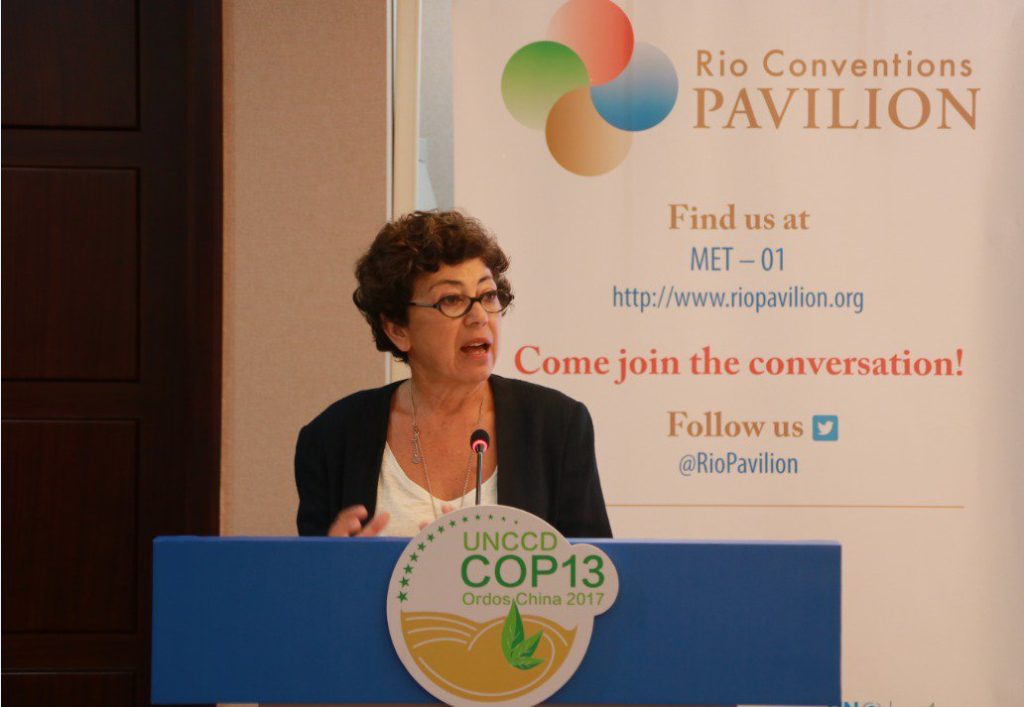Reviving damaged lands and the livelihoods of people affected by desertification, land degradation and drought can be possible by 2030, according to participants who attended the intergovernmental committee that reviews the implementation of the United Nations Convention to Combat Desertification (UNCCD).

Participants at the 17th Committee to Review the Implementation of the Convention (CRIC17), which ended on Thursday, January 31, 2019 in Georgetown, Guyana, stated that the speed at which countries are implementing the Sustainable Development Goal target of land degradation neutrality puts it within reach, and stated two other reasons. The process of setting the target at the country level has drawn in other land-related sectors at the country-level and triggering positive change. In addition, countries are spending more money on activities to contain land degradation and desertification and to manage drought effectively.
In the four years since countries reached the agreement to achieve land degradation neutrality (LDN) by 2030, 120 of the 169 countries affected by desertification, land degradation or drought have started identifying where to reduce the risk of degradation and where to recover degrading land. The process of setting the 2030 country targets for LDN has broadened action to other land-related sectors.
As a result, the Committee was able to review the first-of-its-kind global assessment of land degradation by governments, which is based on quantitative earth observation data collected and analyzed in at least 127 countries. The assessment’s uniqueness lies in that countries are working to measure and monitor three essential indicators of land degradation in the same way over the same period, so that the status of LDN can be determined for the globe.
Based on the assessment, the Committee laid out a range of actions that address issues such as land rights, drought and gender equality, for governments to consider and agree on when they meet in October of this year in New Delhi, India, during the 14th Session of the Conference of the Parties (COP14).
“We have seen a sea-change and huge progress” since the Convention was negotiated in 1994, said Monique Barbut, the UNCCD Executive Secretary, during the closing of the meeting.
“With a tiny budget we’re getting things done. We have the LDN fund up and running. We have LDN projects taking shape in more than hundred countries. A project preparation facility with the other Rio conventions is in the pipeline. Drought plans are being developed in nearly 50 countries. Land degradation and drought are recognised in the Global Compact on migration as key areas of concern,” Barbut said.
Countries said “LDN is a visionary target” and expressed their satisfaction with this first collaborative analysis and assessment of land degradation. Many countries praised the achievements in data gathering and stressed the added value of the provided tools, which facilitated the use of national data to derive the indicators of land degradation using internationally standardised methodologies. However, many also called for the improvement of the tools, training in their application and support to generate more detailed national data.
Barbut, whose term as head of the Convention ends in February, admitted she “was very suspicious and very tough about UNCCD and what it could achieve” in the very early days when she was part of the team that negotiated the three Rio Conventions on climate change, biodiversity and desertification.
“But the potential of this convention has only just started to be realised,” she said, and urged countries to use their creativity and imagination to help amplify UNCCD and help it reach its full potential and stressed that “it is not an impossible ambition.”
The Committee thanked the outgoing Executive Secretary for her contribution to raising the visibility of the Convention at a global level.
